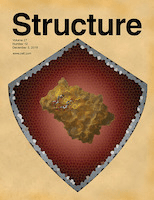
STRUCTURE
Scope & Guideline
Advancing the frontiers of structural and molecular biology.
Introduction
Aims and Scopes
- Molecular Structure Determination:
The journal emphasizes studies that employ various structural biology techniques such as X-ray crystallography, cryo-electron microscopy, and NMR spectroscopy to determine the atomic structures of proteins, nucleic acids, and complexes. - Biological Mechanisms and Functionality:
Research articles often explore how the structural features of biomolecules relate to their biological roles and mechanisms, offering insights into processes such as enzyme catalysis, receptor-ligand interactions, and cellular signaling pathways. - Innovative Methodologies:
The journal showcases advancements in methodologies for structural determination and analysis, including computational modeling, machine learning applications, and novel experimental techniques that enhance data quality and interpretability. - Structural Insights into Disease Mechanisms:
There is a consistent focus on how structural biology can elucidate the molecular basis of diseases, particularly in the context of drug design and therapeutic intervention, by revealing targets and mechanisms of action. - Interdisciplinary Approaches:
The journal promotes interdisciplinary research that integrates structural biology with biochemistry, molecular biology, and computational sciences, fostering a holistic understanding of biological systems.
Trending and Emerging
- Cryo-Electron Microscopy (Cryo-EM):
A significant increase in studies utilizing cryo-EM has been observed, reflecting its growing importance in structural biology for providing high-resolution insights into large macromolecular complexes and their dynamics. - Machine Learning and Computational Modeling:
Recent publications demonstrate a surge in the application of machine learning techniques for predicting structures and understanding protein-ligand interactions, highlighting a trend towards computational approaches in structural biology. - Structural Biology of Infectious Diseases:
There is an increasing focus on the structural biology of pathogens, particularly in understanding the molecular mechanisms of viruses like SARS-CoV-2, which has implications for drug design and vaccine development. - Dynamic and Functional Studies:
Research that emphasizes the dynamics of biomolecules and their functional implications is on the rise, showcasing an interest in understanding how structural changes influence biological activity. - Integration of Structural and Functional Data:
An emerging trend is the integration of structural data with functional assays to provide a more comprehensive understanding of biomolecular interactions and mechanisms of action, reflecting a holistic approach to research.
Declining or Waning
- Traditional Structural Biology Techniques:
There appears to be a waning emphasis on classical approaches like NMR spectroscopy and crystallography as standalone techniques, with a shift towards integrating these methods with high-throughput and computational techniques. - Basic Structural Studies Without Functional Context:
Studies that focus solely on the determination of structure without linking to functional implications or biological relevance seem to be less favored, reflecting a trend toward more applied research. - Static Structural Analysis:
There is a noticeable decline in papers that solely present static structures, with a growing preference for dynamic studies that incorporate conformational changes and molecular dynamics simulations. - Studies on Non-Protein Structures:
Research focusing on non-protein biomolecules, while still relevant, has seen decreased visibility in the journal, possibly due to the increasing complexity and focus on protein structures and interactions.
Similar Journals
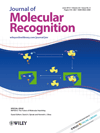
JOURNAL OF MOLECULAR RECOGNITION
Empowering Insights into Molecular InteractionsJOURNAL OF MOLECULAR RECOGNITION, published by Wiley, is an esteemed academic journal that has been at the forefront of molecular biology and structural biology research since its inception in 1988. With its ISSN 0952-3499 and E-ISSN 1099-1352, this journal serves as a vital platform for disseminating innovative studies and findings in the realms of biochemical interactions and molecular structure elucidation. Although currently positioned in Quartile 4 of both molecular and structural biology categories based on 2023 metrics, the journal is dedicated to advancing knowledge in quantitative and qualitative molecular recognition processes. Researchers, professionals, and students alike will find that this journal is instrumental in keeping abreast of cutting-edge developments in the field, even as it continues to build its impact and reputation within the dynamic research landscape. Located in the United Kingdom, it is committed to promoting a diverse range of studies that drive forward the understanding of molecular interaction phenomena, thus empowering its readership to contribute effectively to the field.
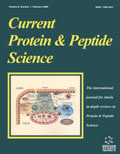
CURRENT PROTEIN & PEPTIDE SCIENCE
Pioneering Discoveries in the Molecular Foundations of LifeCURRENT PROTEIN & PEPTIDE SCIENCE, published by Bentham Science Publishers, is a pivotal journal dedicated to the dynamic and rapidly evolving fields of protein and peptide research. With an ISSN of 1389-2037 and an E-ISSN of 1875-5550, this esteemed journal serves as a platform for disseminating cutting-edge findings from various disciplines, including biochemistry, cell biology, and molecular biology. Recognized for its influence with a 2023 Scopus ranking placing it within the top quartiles of its categories—Q3 in Biochemistry, Q4 in Cell Biology, and Q2 in Medicine—the journal not only enhances the visibility of critical research but also supports the academic community in advancing our understanding of the molecular foundations of life. Established in 2000 and running through 2024, CURRENT PROTEIN & PEPTIDE SCIENCE is positioned to cater to the interests of researchers, professionals, and students alike, providing them with open access to vital knowledge that fuels innovation and scientific inquiry in the United Arab Emirates and beyond.

Current Research in Structural Biology
Fostering Collaboration for Groundbreaking DiscoveriesCurrent Research in Structural Biology, published by Elsevier, is a pioneering Open Access journal that has rapidly gained prominence since its inception in 2019. With a focus on advancing the understanding of molecular and structural biology, this journal provides a platform for researchers and professionals to publish groundbreaking findings that contribute to the field's ongoing development. With a commendable Q2 ranking in both Molecular Biology and Structural Biology categories for 2023, it serves as a vital resource for the community, ensuring accessibility to high-quality research. The journal is indexed in Scopus, showcasing its significant impact and relevance, particularly with a ranking of #26/49 in the Structural Biology discipline. Located in the heart of the Netherlands, Current Research in Structural Biology not only fosters academic discourse but also encourages collaborative research efforts in addressing critical biological questions. Whether you are a researcher, student, or industry professional, this journal is essential for staying abreast of the latest advancements and trends in structural biology.

PROTEINS-STRUCTURE FUNCTION AND BIOINFORMATICS
Bridging Molecular Biology and BioinformaticsPROTEINS - STRUCTURE FUNCTION AND BIOINFORMATICS, published by WILEY, is a leading journal in the fields of biochemistry, molecular biology, and structural biology, recognized for its significant contribution to protein research since its inception in 1986. With its impressive rankings in the Q1 category for Biochemistry and Q2 for both Molecular Biology and Structural Biology in 2023, the journal serves as an essential resource for researchers and professionals seeking to explore the intricate relationships between protein structures and their functions. The journal, based in the United States, operates without an Open Access model, ensuring a curated selection of high-quality peer-reviewed articles that drive innovation and collaboration in the scientific community. Engaging with the robust content of PROTEINS not only bolsters academic scholarship but also opens avenues for groundbreaking discoveries that are pivotal in the advancing field of bioinformatics.
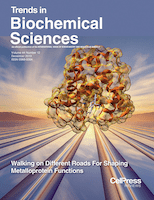
TRENDS IN BIOCHEMICAL SCIENCES
Advancing Knowledge in Molecular BiologyTRENDS IN BIOCHEMICAL SCIENCES is a premier academic journal published by CELL PRESS, focusing on the latest advancements and insights in the dynamic fields of biochemistry and molecular biology. With an ISSN of 0968-0004 and an E-ISSN of 1362-4326, this journal has established itself as a leading source of high-impact research, boasting an impressive Q1 category ranking in both Biochemistry and Molecular Biology as of 2023. The journal's Scopus Ranks further highlight its significance, placing it in the top 3% and 4% of its respective fields, emphasizing its role as a vital platform for disseminating innovative research. Published since 1976 and continuing through 2024, TRENDS IN BIOCHEMICAL SCIENCES provides a comprehensive overview of the latest trends, methods, and applications, helping researchers, professionals, and students stay at the forefront of their disciplines. Although it offers traditional access options, the journal's rich content and authoritative analysis make it a must-read for those pursuing cutting-edge biochemical research.
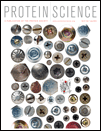
PROTEIN SCIENCE
Pioneering Insights in Biochemistry and Molecular BiologyPROTEIN SCIENCE, published by Wiley, is a premier journal dedicated to the field of biochemistry, molecular biology, and medicine, boasting an impressive impact factor that reflects its influence and importance within the academic community. Established in 1992, the journal has continuously provided a platform for high-quality research, with a current classification in the top quartile (Q1) for its critical contributions to the understanding of protein structure and function, as well as its applications in health and disease. With a Scopus ranking placing it in the 91st percentile among its peers, PROTEIN SCIENCE publishes cutting-edge studies and reviews that are essential for researchers, professionals, and students seeking to advance their knowledge in protein research. Although it does not currently offer open access options, the journal remains dedicated to disseminating vital findings that support the ongoing advancements in molecular biology and biochemistry. Researchers can count on PROTEIN SCIENCE for consistently rigorous peer-reviewed content that fosters meaningful dialog and innovation in the life sciences.
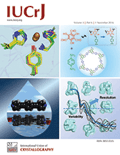
IUCrJ
Empowering Innovation Through Crystal ScienceIUCrJ, published by the International Union of Crystallography, is a leading open-access journal dedicated to advancing knowledge in the fields of Biochemistry, Chemistry, Condensed Matter Physics, and Materials Science. Since its inception in 2014, IUCrJ has quickly established itself as a prestigious platform for high-quality research, achieving a remarkable record as a Q1 journal across its categories in 2023. With an increasing impact in the scientific community, evidenced by impressive Scopus rankings, IUCrJ offers unparalleled access to groundbreaking discoveries and methodologies that contribute to the understanding and application of crystallography in various disciplines. The journal’s commitment to open access ensures that research is readily available to a global audience, fostering collaboration and innovation in the scientific community. IUCrJ is an essential resource for researchers, professionals, and students aiming to stay at the forefront of crystallographic research and its interdisciplinary applications.

Journal of Structural Biology-X
Elevating Knowledge in the World of Biochemistry and BeyondThe Journal of Structural Biology-X, published by Elsevier, is a leading open-access journal dedicated to advancing the field of structural biology. Launched in 2019, it has quickly established itself as a vital resource for researchers, professionals, and students, boasting a prestigious Q1 ranking in Structural Biology for 2023 and achieving an impressive Scopus rank of #19 out of 49 in the biochemistry, genetics, and molecular biology category. With an E-ISSN of 2590-1524, this journal emphasizes accessibility and collaboration by providing open access to its comprehensive collection of research articles, reviews, and cutting-edge methodologies. The scope of the journal encompasses significant themes within structural biology, including protein structure, molecular interactions, and imaging techniques, facilitating interdisciplinary dialogue and innovation. Join the global community of scientists and contribute to the body of knowledge that propels our understanding of molecular architecture through the Journal of Structural Biology-X.

BIOCHEMICAL AND BIOPHYSICAL RESEARCH COMMUNICATIONS
Connecting researchers through groundbreaking discoveries.BIOCHEMICAL AND BIOPHYSICAL RESEARCH COMMUNICATIONS, published by Academic Press Inc Elsevier Science, stands as a leading periodical in the fields of biochemistry, biophysics, cell biology, and molecular biology. With an ISSN of 0006-291X and an E-ISSN of 1090-2104, this esteemed journal has been a pivotal platform for the dissemination of groundbreaking research since its inception in 1959, continuing to publish influential findings through at least 2024. It holds a commendable Q2 ranking in Biochemistry and Q1 status in Biophysics as of 2023, reflecting its high impact and relevance in the field, supported by its strong Scopus rankings—ranking #43 in Biophysics and maintaining a presence in the top quartiles of several related categories. Although it is not an open-access journal, it provides critical insights and essential data that cater to researchers, professionals, and students keen on advancing their understanding of complex biochemical and biophysical processes. Its significant contributions to the scientific community underscore the importance of this journal as a reference point for innovative research and collaborative discourse.
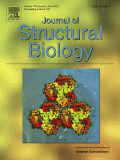
JOURNAL OF STRUCTURAL BIOLOGY
Pioneering Research in Structural Biology TechniquesJOURNAL OF STRUCTURAL BIOLOGY, published by Academic Press Inc. Elsevier Science, is a prestigious peer-reviewed journal dedicated to advancing the field of structural biology. With an impressive Impact Factor and recognized as a Q1 journal in its category for 2023, it holds a significant position in the academic community, ranked 20th out of 49 in the Scopus Biochemistry, Genetics and Molecular Biology - Structural Biology category. The journal publishes groundbreaking research that contributes to our understanding of biological macromolecules and their complexes, span from 1990 and continuing through 2024. Researchers and professionals alike rely on this journal for high-quality articles that cover a wide array of techniques including X-ray crystallography, NMR spectroscopy, and cryo-electron microscopy. Although it does not operate under an Open Access model, the journal remains a vital resource for those in academia and industry searching for the latest findings and methodologies in structural biology.